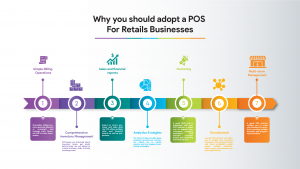Machine Learning (ML) and Artificial Intelligence (AI) are booming technologies leaving their footprints on every sector and major industries like retail are spending on these technologies to improve business. With their online competitors using data-driven business models to optimise their operations, traditional retailers are slowly transitioning from their legacy infrastructure and adopting the technologies like AI and ML.
So how is AI and ML expanding the ecosystem to enhance business potential? Before going in too deep we should understand the nuances and interdependencies of AI, ML and Deep Learning (DL).
AI vs ML vs DL
AI involves machines that can perform tasks that are characteristics of human intelligence. ML is a way of training an algorithm so that it can learn how. Simply ML is a way of achieving AI. DL Artificial Neural Network (ANN) are algorithms that mimic the biological structure of the brain. DL is one of many approaches for achieving ML.
Time to embrace digital transformation
Get AI right to not just compete, but thrive. Here are some of ways retailers are embracing technology to develop robust solutions:
1) Customer Purchase Projections
2) Cognitive Inventory Procurement
3) Behavioural Analysis of Customers and Staff
4) In-Store visual Marketing
Customer Purchase Projections:
Retailer are shifting from being customer oriented to customer obsessed. With data being the heart of all business decisions now, AI is helping detect the mood of a customer. And then based on his moods AI systems are helping suggest products that he may be looking for. So based on previous purchases data AI can help predict purchase patterns, frequency as well as engage with customers to bolster a loyal customer base.
Cognitive Inventory Procurement
Cameras are used for little more than security, delivering value to the business and humans needing to watch the footage themselves. AI systems can predict patterns in inventory and suggest marketing initiatives or promotions. For Ex. if a particular product is selling better than others, AI can suggest more procurement. In the near future, AI systems can replace supply chain assistants, purchase order systems, supplier onboarding workflows, machine barcode generation, prices forecasting, profit projection systems. etc.
Behavioural Analysis:
AI systems can analyze the customers and staff behaviour in store. Detecting suspicious behaviour like hiding items in the store, identifying repeat visits from suspected customers in the store, deliberate skipping of scanning of items in the shopping cart, is all possible with AI. Infact globally connected systems can show these customers and staff behaviour to other stores as well.
In-Store Visual Marketing
With the ever increasing brands in retail, shelf space is shrinking. This has made shelf marketing the need of the hour. Use off-shelf marketing through point-of-purchase displays can impact sales and AI has come to the rescue of retailers. AI can suggest store layout and placement of items in such a way that more commonly sold items or profit generating items can be placed at prominent places in stores.
Some other ways in which retailers are leveraging AI is to hire employees on contract or payrolls depending on busy time of the month.Similarly increase or decrease in cash counters based on past purchases. Most of the things mentioned above are already in play to help retailers sustain through the influx of various cutting-edge technology to revolutionize retail. As for the rest, they are already being implemented through other traditional channels and will soon join the AI bandwagon.





